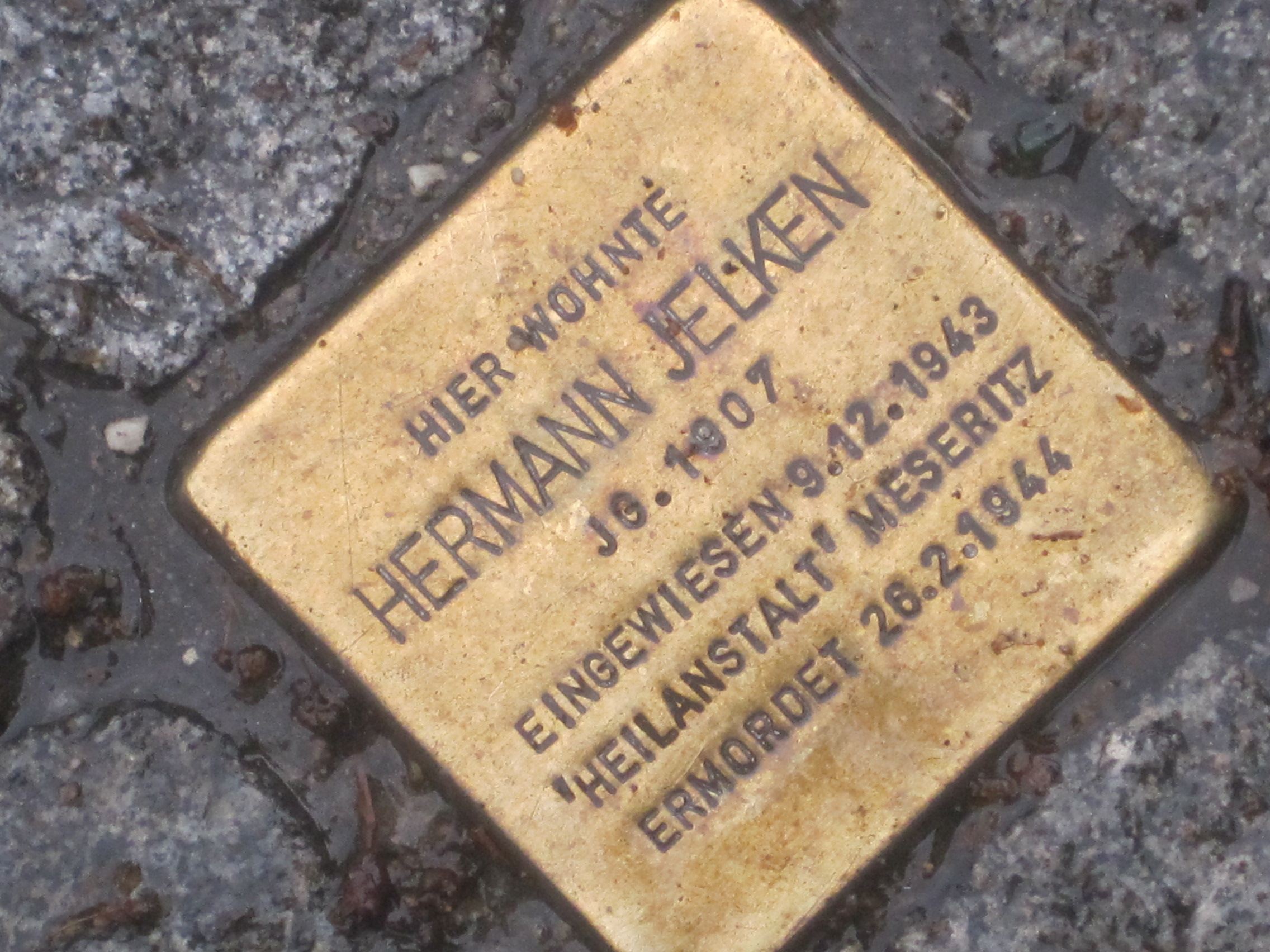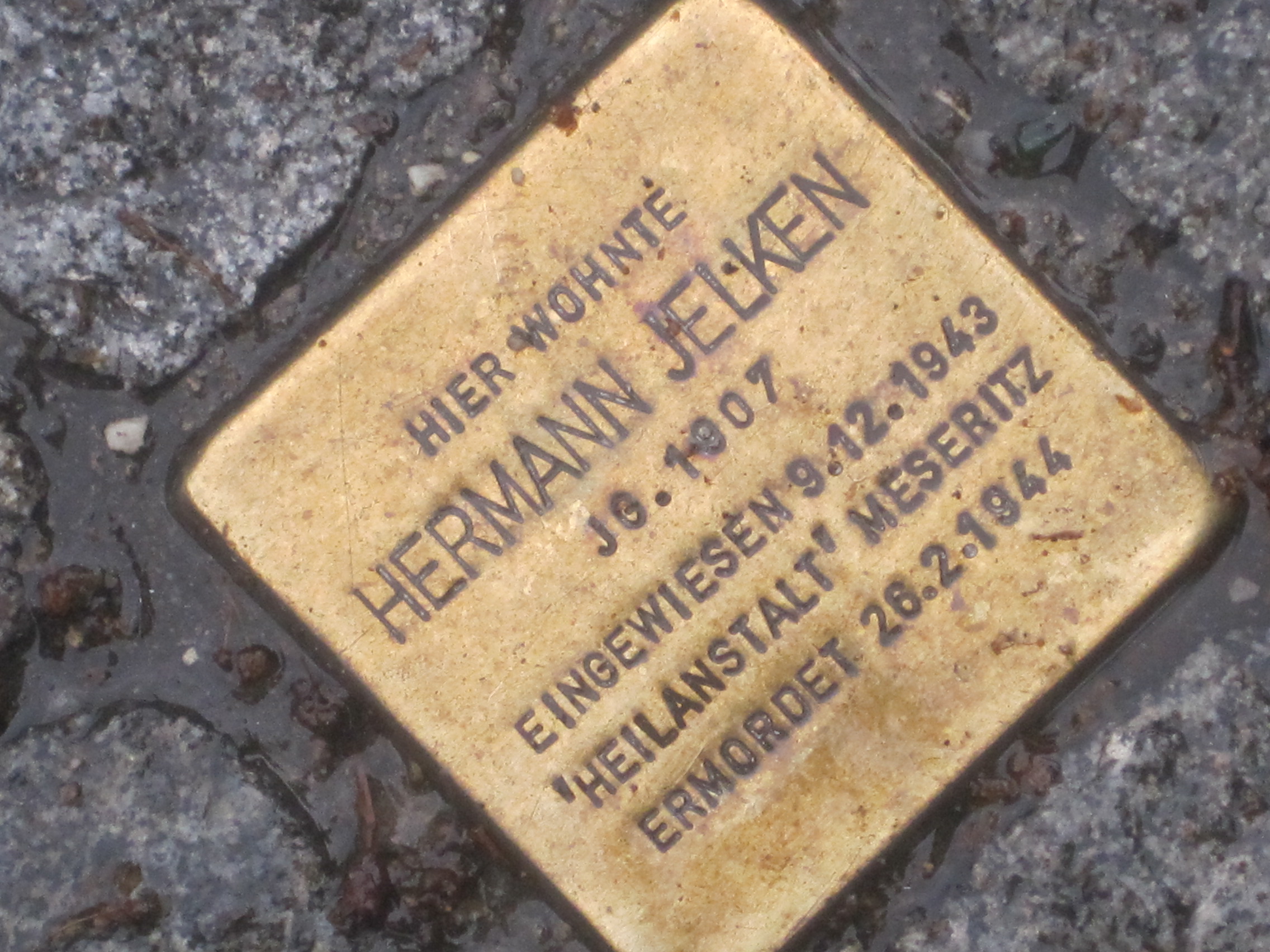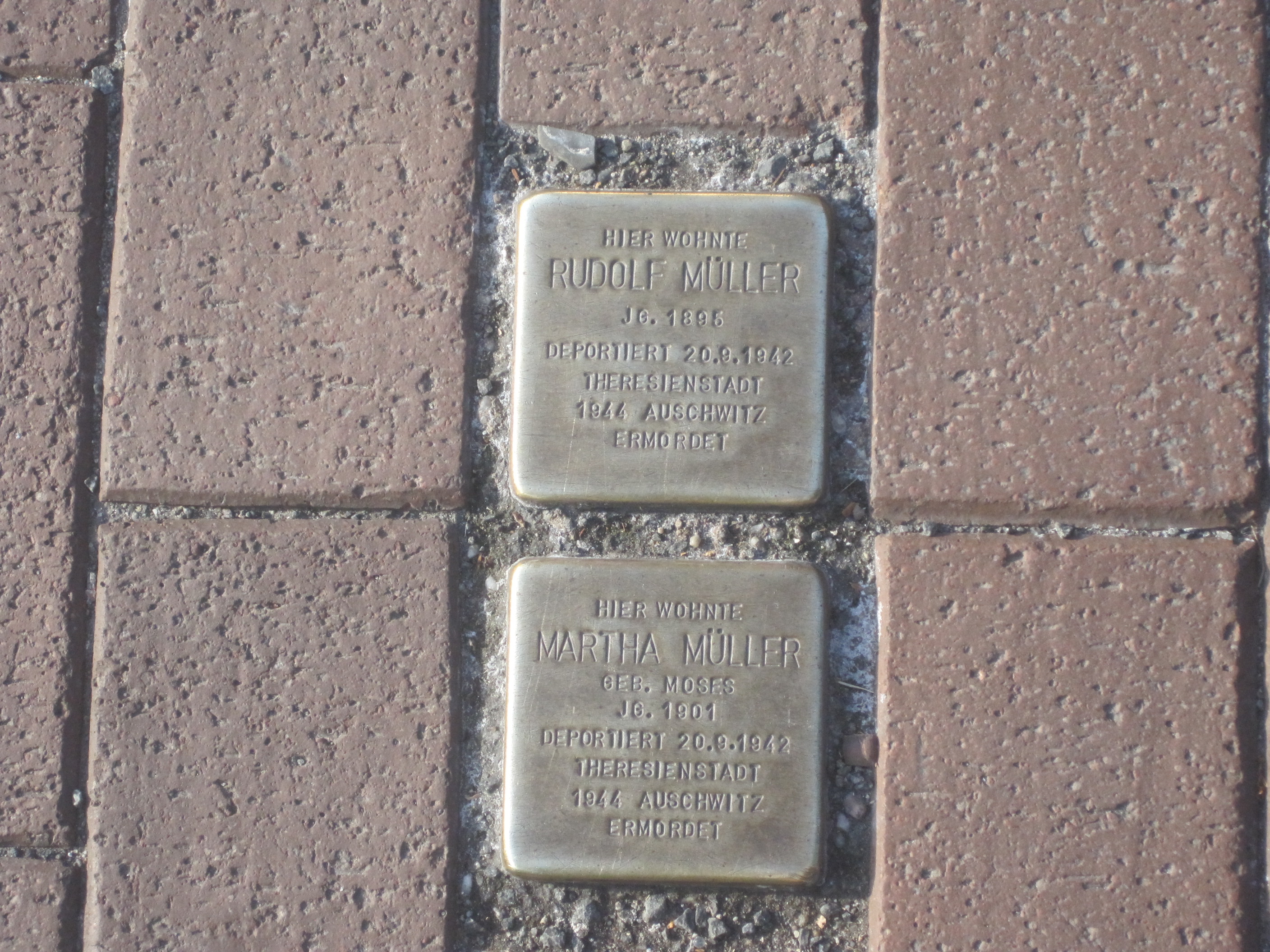
I’ve long been interested in Germany’s remembrance and commemoration of the Holocaust, one of the most poignant forms of which, are (at least in my view) Stolpersteine. I’ve been meaning to write about the monuments for some time now, particularly since I found a pair outside the building I’m currently living in.
Stolpersteine are simple, cobble-sized plaques laid outside the former homes of victims of the Holocaust. Though most commemorate murdered Jews, there are also Stolpersteine dedicated to other victims of the Nazi regime. The plaques normally record very basic information: the name, date of birth and fate of a person – including when and where they perished.
Though they are now found in practically every German city, as well as across Europe, they are surprisingly easy to miss. But once you know what you are looking for, the sheer volume of Stolpersteine is staggering – you can find them everywhere.
In my opinion, the sheer abundance of Stolpersteine is what makes them so significant. They go a long way to show how Nazi ideology pervaded every village, town and city in most of Europe – they show victims on every street. Poignantly, in place of an extravagant monolith, you have a series of very subtle stones which each represent a lost life – a constant reminder of the huge scale of loss the Holocaust embodies.
Living in Germany, Stolpersteine are something you can’t ignore – I’ve come across them in every city I’ve visited here and I keep noticing new ones on my way to work, despite walking the same route twice a day for almost four weeks.
While I think it would be inappropriate to take any joy from Stolpersteine, or to label any form of commemoration as ‘better’ than another, I do think that these tiny little stones are a very effective means to show the huge reach of the Nazi regime into everyday life. Furthermore, they serve as a constant reminder of what happened here in Europe – the effects of which can still be seen today.




Many thanks for your perspective on this issue. As a historian, I am very interested in memorials myself. I’d like to add that the Stolpersteine also tell us a lot about the public discourse on the event thus memorialized: There are frequent reports (although “mainstream media” often ignore them or they get buried in the flood of news) about neo-Nazi defacement of these memorials, and you also hear about people protesting against plans to put a Stolperstein in front of their house. Sometimes, this happens because they don’t want to be reminded of the holocaust, some outright say Germany has “suffered” enough from the so-called “cult of guilt,” and some folks are simply afraid that people will believe they have profited from “Aryanization”: When people were arrested, deported, or exiled, the Nazi government auctioned off their property, and not only the Nazi bigwigs, but the whole spectrum of German society went to make a bargain. If you now live in a house “aryanized” in the late 1930s, this might suggest your grandparents/parents profited from others’ victimization.
Frank
Thank you, I’m glad you liked the post.
I can completely understand why people would feel uneasy about a Stolperstein outside their door – it almost implies that you are living in someone else’s house – someone who had their property taken from them and was never able to get it back.
Nevertheless, it is an important reminder of Germany’s ‘dark chapter’. My current street has quite a few Stolpersteine and I feel it’s important to know that Jewish people lived, worked and existed here. They weren’t found in the far reaches of Germany, they lived in cities and were ingrained in German life. Something that should not be forgotten.
I remember visiting Germany a couple of years ago and having the little memorials pointed out to me on a walking tour. Once I knew what they were, I also started seeing them everywhere!! I agree that they’re an incredibly poignant memorial to victims of the Nazi regime due to their simplicity. I think that most people share this view, but I have heard people criticise the fact that because the markers are so small, people walk right over them and don’t even notice them, in a way disrespecting the memory of the people who suffered. I suppose there are no ‘perfect’ forms of commemoration, but overall I think this is a lovely form of commemoration, it just means that people need to open their eyes to the world around them a bit more.
I totally agree, but I think that the same happens with huge obelisks, or even huge statues. As time goes by, they simply fade into the background and people forget what they are there to commemorate. The sheer quantity of Stolpersteine helps to get around this I think – you are always spotting new ones.
Love your post! Just wrote one myself about the stones honoring my family. Coming to Hamburg where my family once lived and seeing these stones was an amazing experience. Until the foundation reached out to my family, I had not even known of their existence. Thanks for your post, I really enjoyed reading!
Thank you, that really means a lot. It’s great to hear that the foundation actively reached out to you – how did that come about?